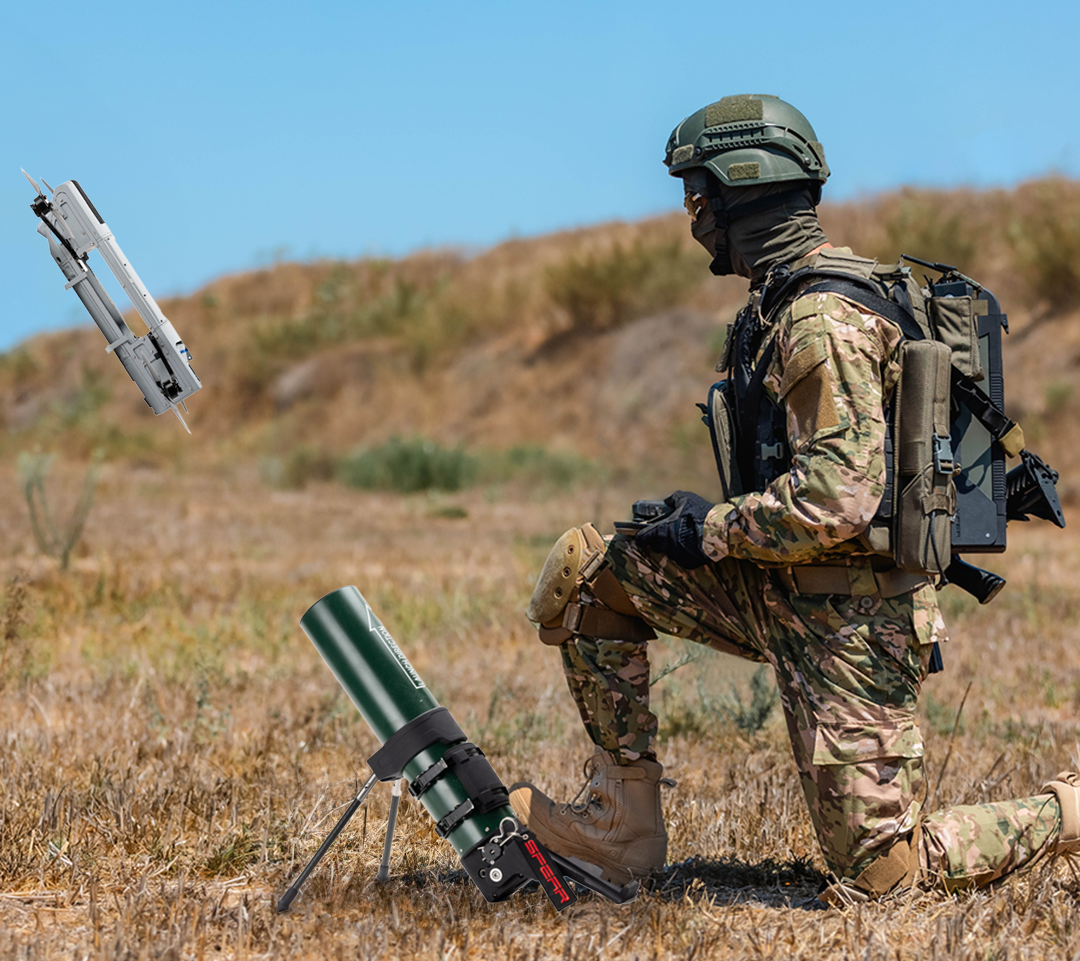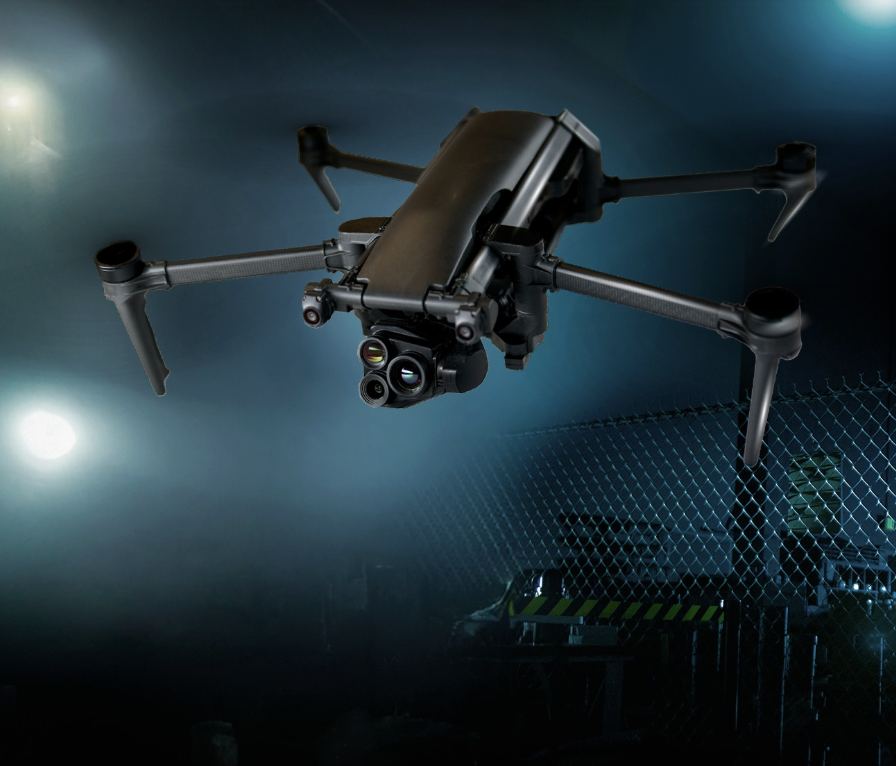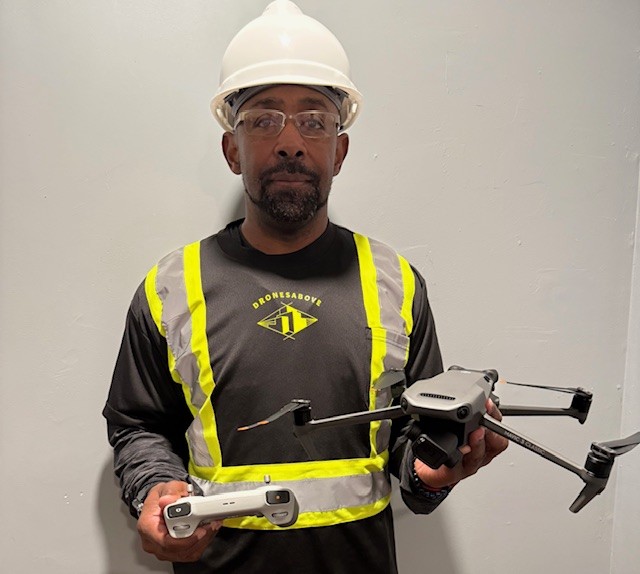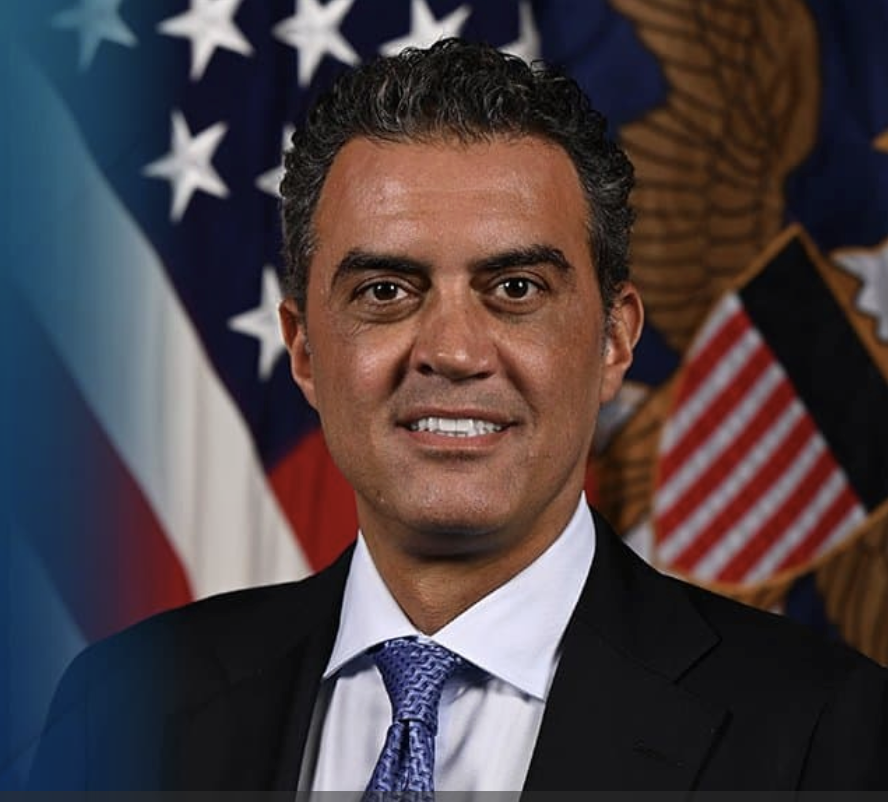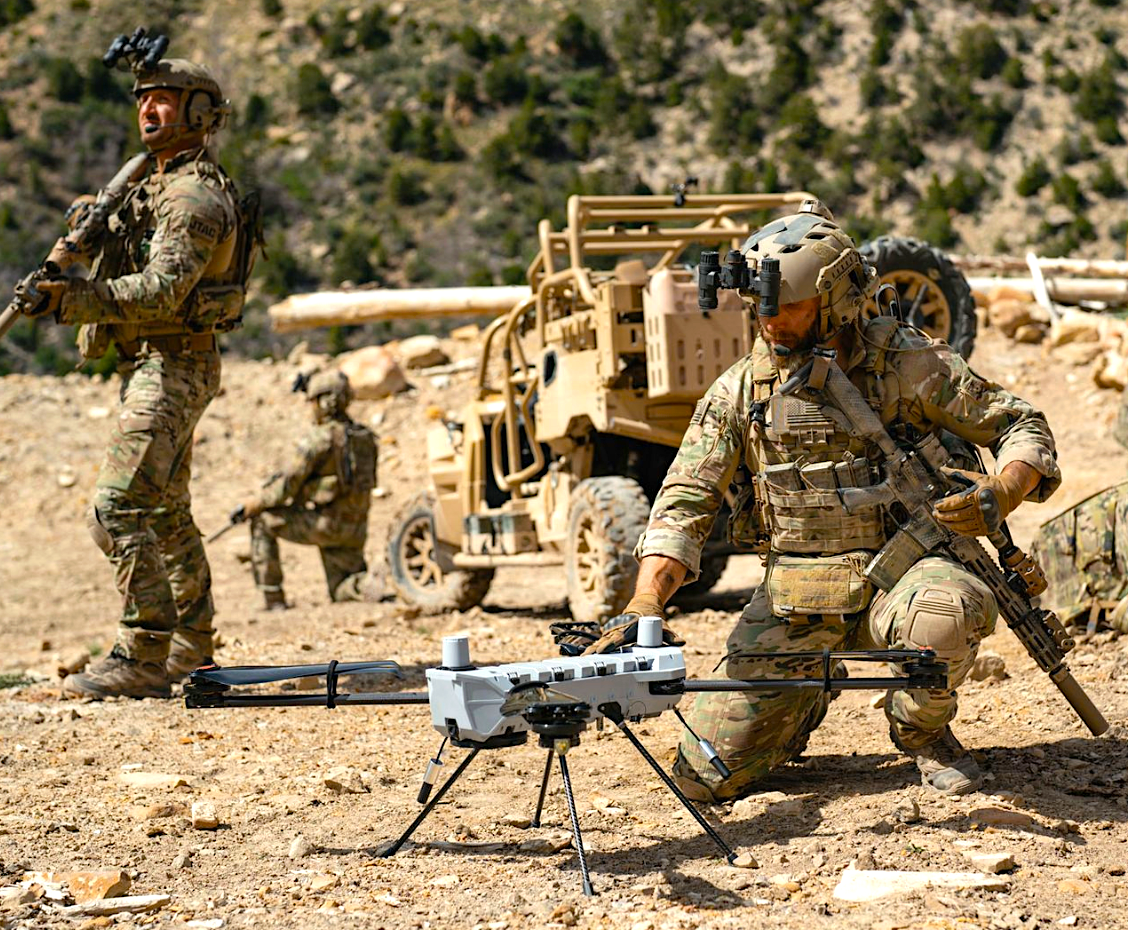Featured NewsTrending NewsSearch and RescueEvolving Tech: The Ambulance Drone
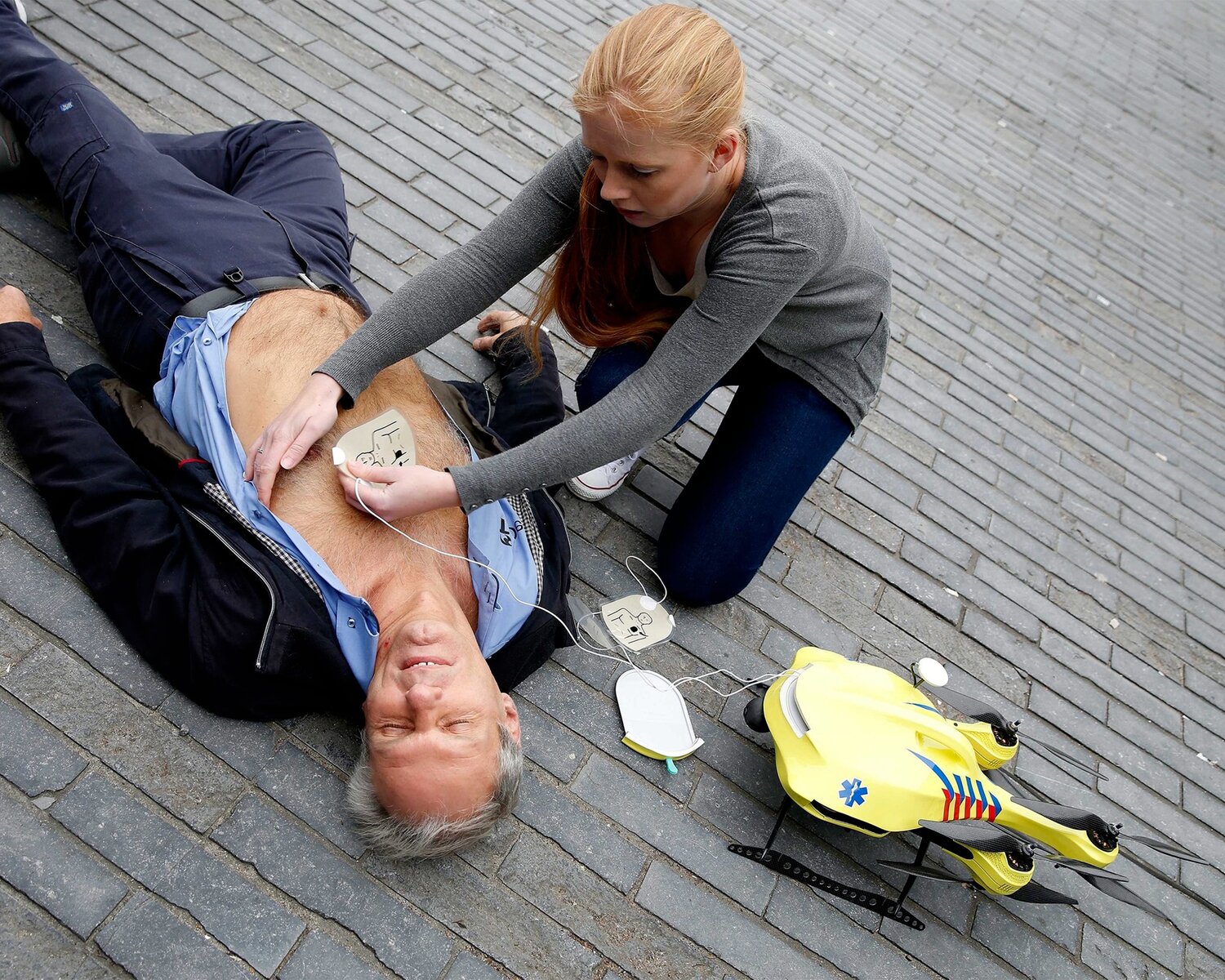
26 August 2022
By Alec Momont
The first minutes after an accident are critical and essential to provide the right care to prevent escalation. Speeding up emergency response can prevent deaths and accelerate recovery dramatically. This is notably true for heart failure, drowning, traumas, and respiratory issues. Lifesaving technologies such as an Automated External Defibrillator (AED), medication, and Cardiopulmonary Resuscitation (CPR) aids can be designed compact enough to be carried by a drone.
For the Ambulance Drone, a new type of frame was developed that is a compact flying toolbox containing essential supplies for (lay-person) advanced life support. Portability helps the drone to be used anywhere—including indoors.
The first prototype focuses on the delivery of an Automated Defibrillator (AED). In the European Union, around 800,000 people per year suffer from a cardiac arrest with an upsetting survival rate of just eight percent. The main reason for the high number of casualties is the relatively slow response time of emergency services, which average around ten minutes. For reference, brain death can start to occur in just four to six minutes.
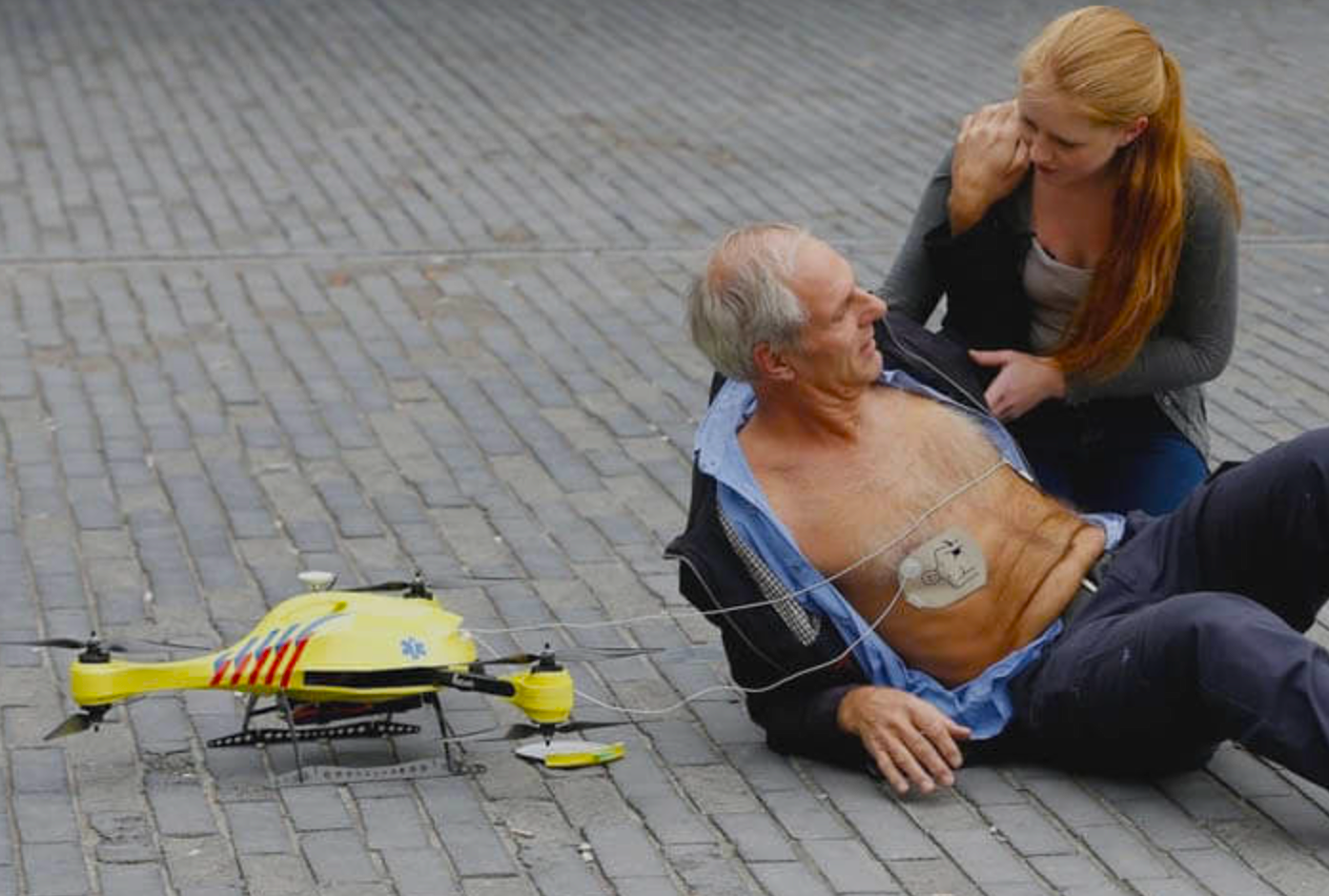
With the Ambulance Drone, it is possible to deliver defibrillation to any patient in a seven-mile area within one minute. At that speed, survival rates can be as high as 80 percent. The incorporation of a two-way, video-supported communication channel in the drone between operators and first responders will improve initial care efforrts. For example, successful AED usage by the public is currently at 20 percent. With personalized instructions and communication on the Ambulance Drone, we can increase that success rate to 90 percent. In short, the Ambulance Drone helps to save lives by extending existing emergency infrastructure with a network of fast and compact UAVs capable of bringing emergency supplies and establishing communication, anywhere.
The Ambulance Drone is the result of my Master Graduation thesis research project. It aims to save lives through the delivery of emergency supplies within the first minute after an accident. Read the case study.

